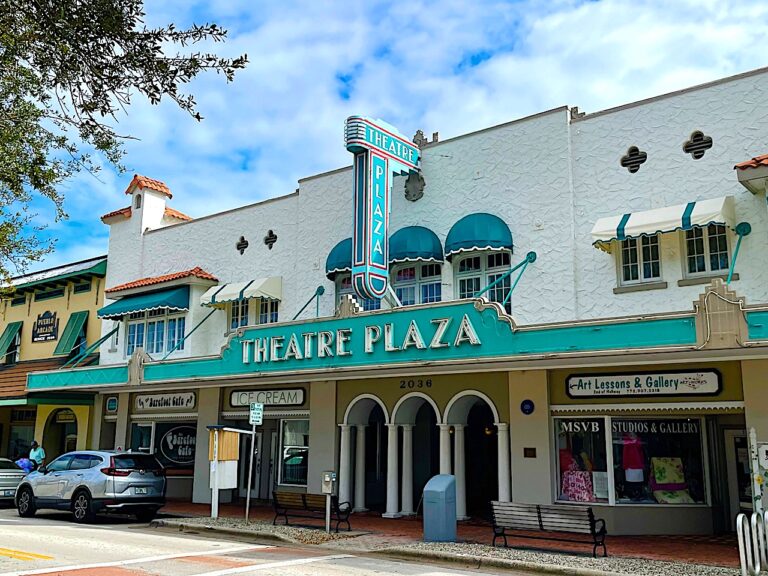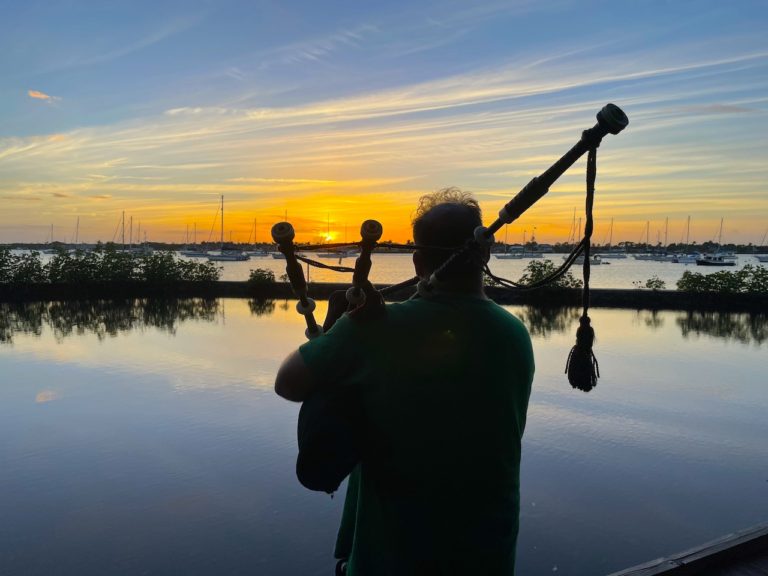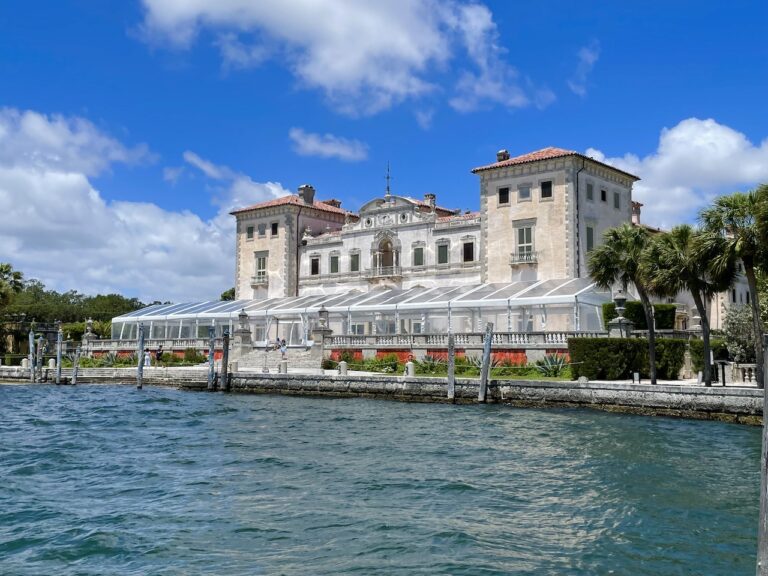It’s Father’s Day weekend and we finally got a break from all the rain. So, we loaded up the family and paid a long overdue visit to the Busch Wildlife Sanctuary’s new facility in West Jupiter, Florida.
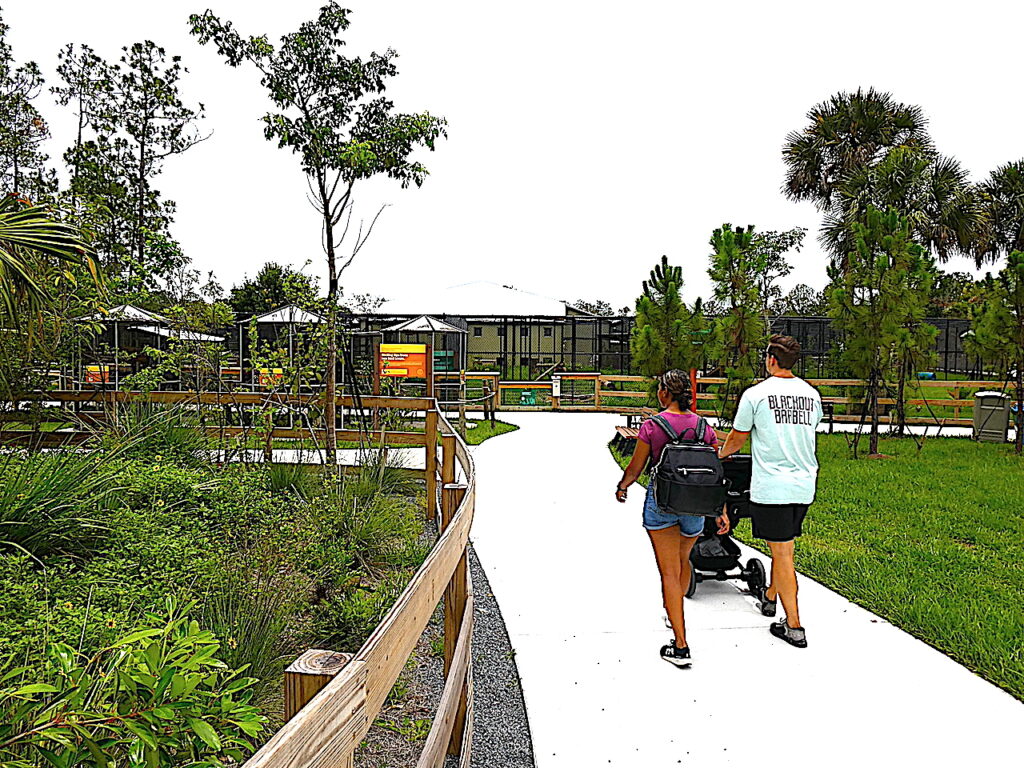
The Busch Wildlife Sanctuary protects and conserves Florida’s wildlife. Their mission is to rescue, rehabilitate, release, and educate! The Busch Wildlife Sanctuary is both a nature center and a wildlife hospital. Most of the animal residents are native to Florida.
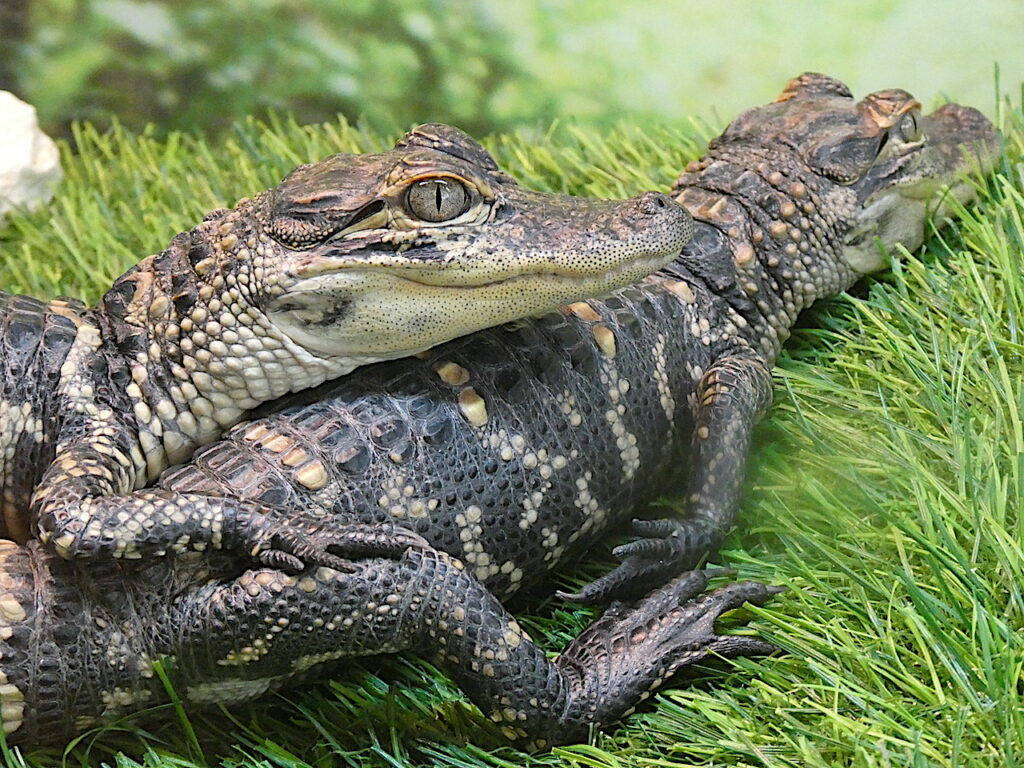
Note: The Busch Wildlife Sanctuary is not a zoo, but a refuge that combines a nature center with a wildlife hospital.
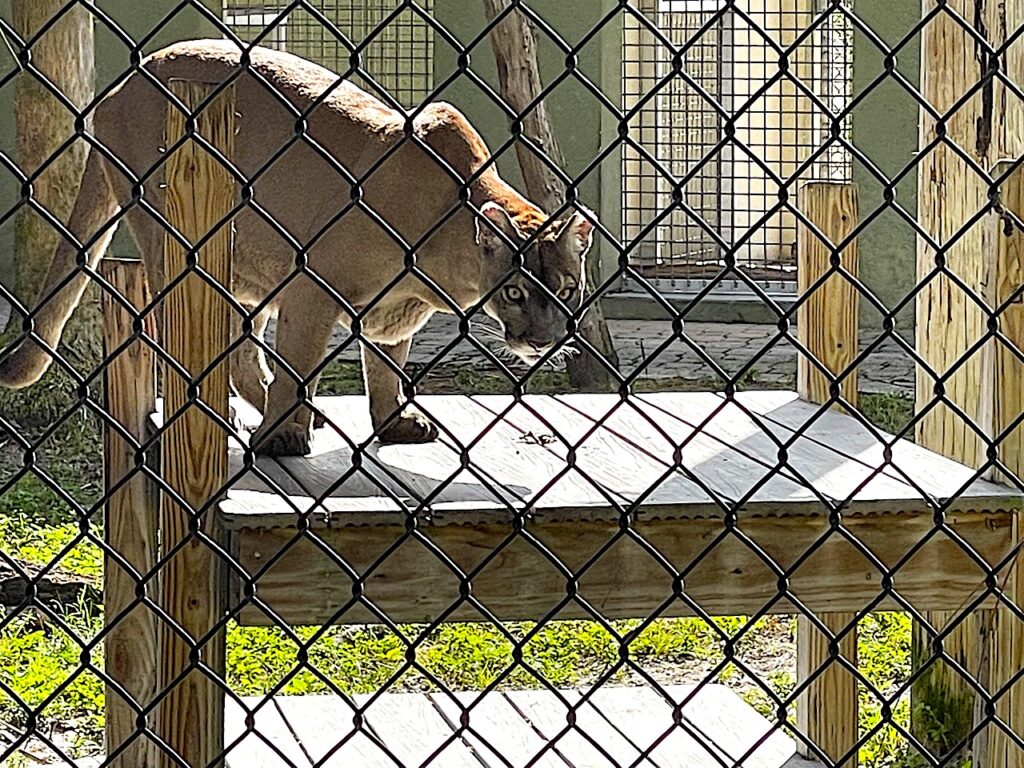
Animal Care Building
Each year, the sanctuary’s hospital staffers treat more than 5,000 animals—from squirrels and raccoons to exotic birds and reptiles to release the critters back into the wild. Most injuries treated at the wildlife hospital are directly related to man including collisions with automobiles, fishing line entanglement, electrocutions, illegal gunshots, poisonings, and attacks by dogs and cats. Volunteers from Busch Wildlife are often sent out to rescue animals that the public can’t, such as raccoons, great blue herons, bobcats, foxes, etc…

Educational Amphitheater
Sit for a spell in the Educational Amphitheater for a wildlife encounter and see native Florida animals up close! Conservation Conversations are held daily and each program is different so you never know what you might see.
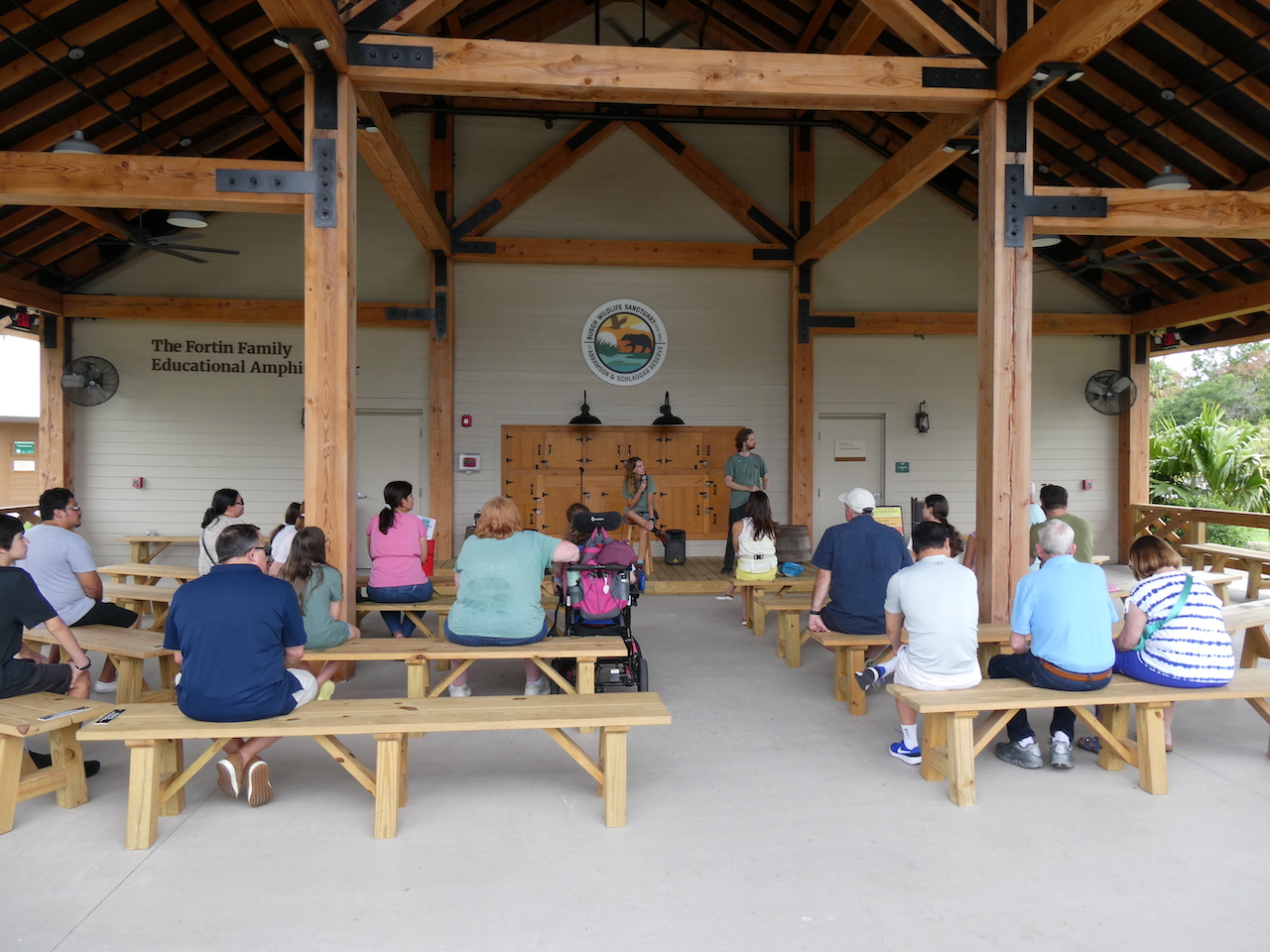
Animal Wranglers do show and tell with select wildlife to give visitors a closer look. The folks at Busch Wildlife Sanctuary love to educate all visitors about animals and the conservation of our natural environment. With the help of the educational animal ambassadors, you can learn not only about the animal’s biology, but their habitats, and conservation efforts.
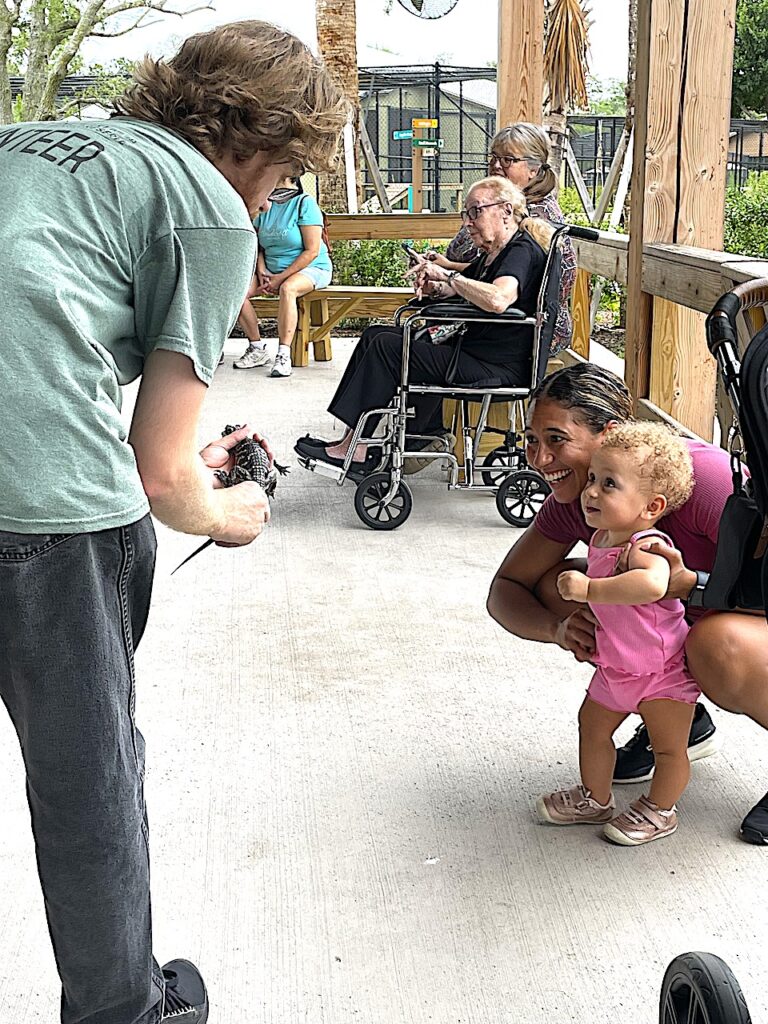
If interested, Busch Wildlife is always looking for new volunteers. You will interact with an incredibly diverse range of animals and people, whether at the Sanctuary or in the community. You will learn the fundamentals of working at a sanctuary and further develop your knowledge of a diverse range of animals and the laws we abide by to protect Florida’s resources, habitats, and inhabitants.
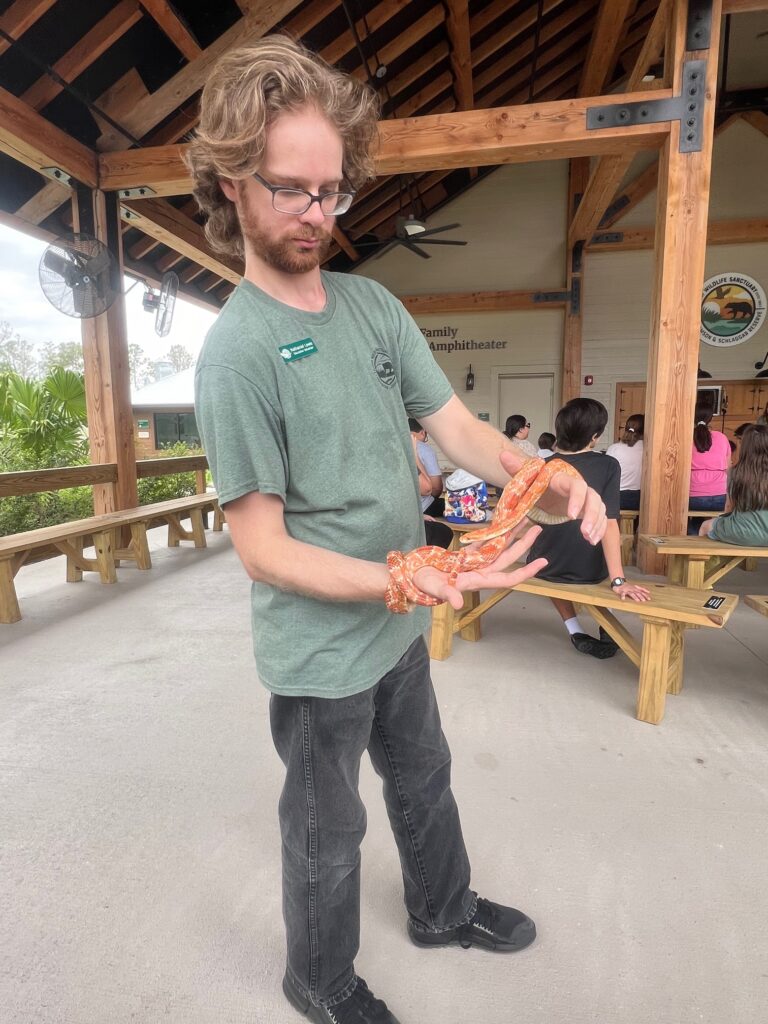
Some Feathered Friends
See and learn about Water Birds, Birds of Prey, and Songbirds.
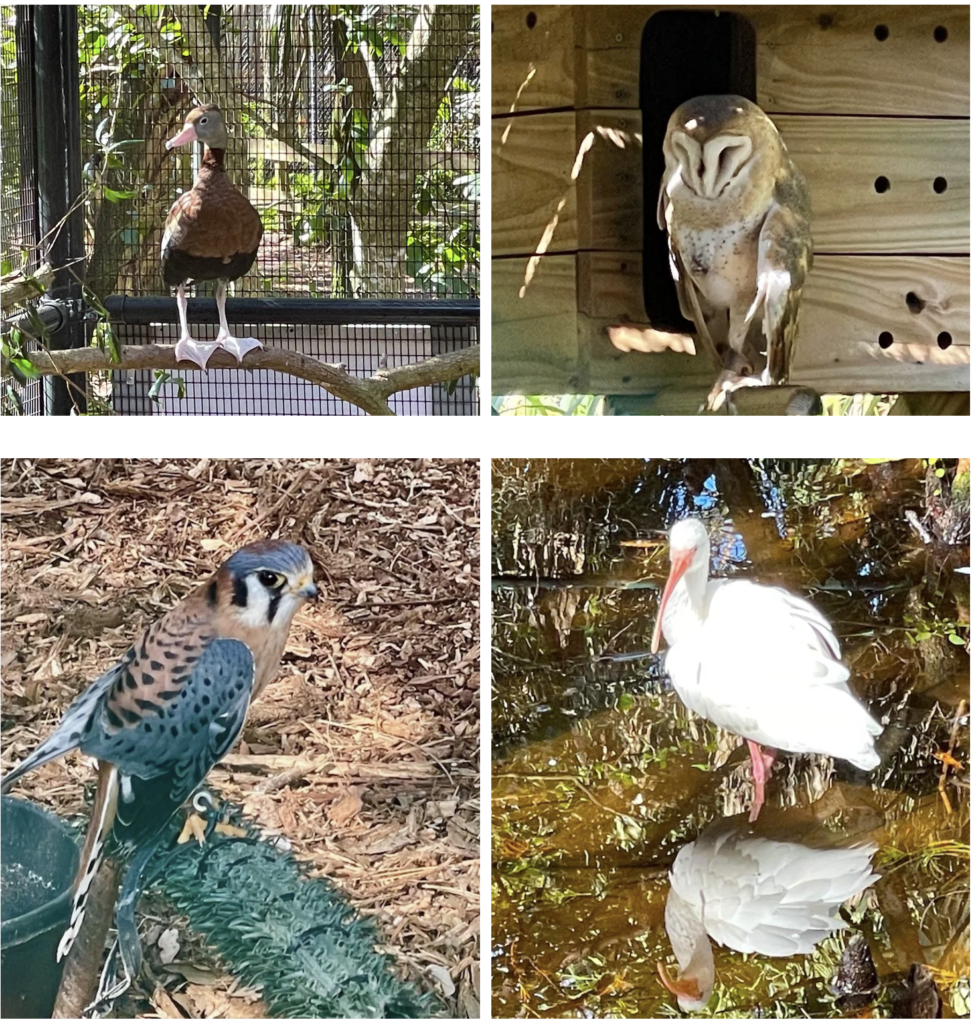
The Bald Eagle
The eagles on exhibit have a wing injury and cannot fly. Bald eagles are common residents of our wetlands and lakes. One of our nation’s national birds at the sanctuary lost an eye, but is otherwise healthy, living in the sanctuary’s avian ambassador’s new home.

Water Birds
This enclosure houses a variety of water birds. These birds live in and around fresh, brackish, or salt water. You’ll notice Brown pelicans, a Royal tern, a Double-crested cormorant, Black-crowned night herons, a Canada goose, and a duck.

The Florida Bobcat
The Florida Bobcat and the Panther are two predatory big cats native to Florida. You can find these felines throughout the state in the deepest swamp to your backyard. Bobcats can weigh from 13 to 30 lbs! They like to live in dens, hallowed out trees, caves, or rock outcroppings. Also, they can climb and swim with ease.
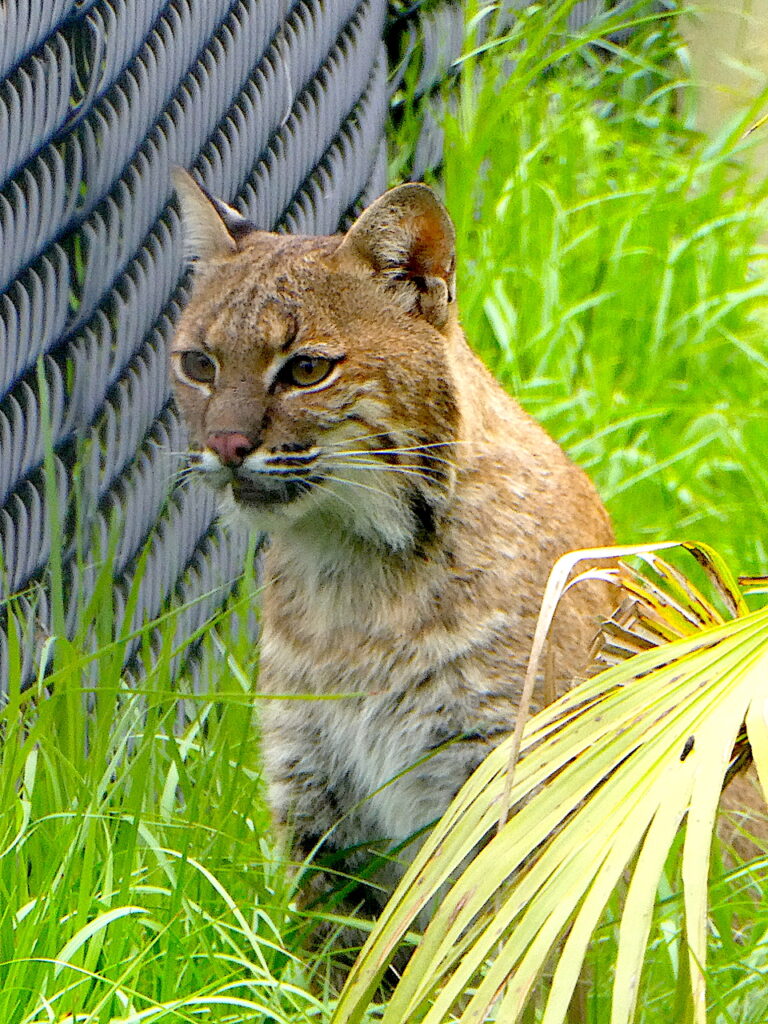
River Otters
There are two otters on exhibit at the sanctuary. The male was orphaned most likely due to a congenital birth defect, leaving him blind in one eye. The female was transferred here from another organization due to compatibility issues with the other otters at the facility.

The White-Tailed Deer
This deer gets its name from the tail. It is black/brown above and white below. White-tailed deer vary in size depending on the habitat. Adult male deer in Florida average 115 pounds, but can reach 190 pounds or more in North Florida. Antler growth generally begins in the spring and by the summer the antlers are covered with a velvety tissue that dries up and peels off.
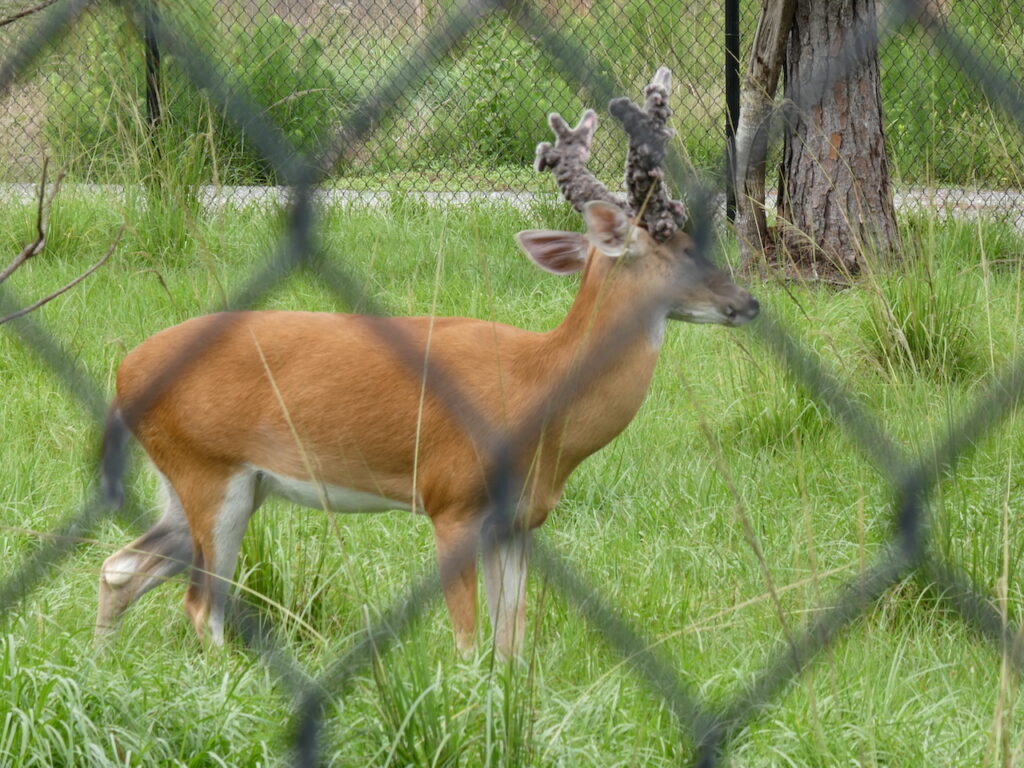
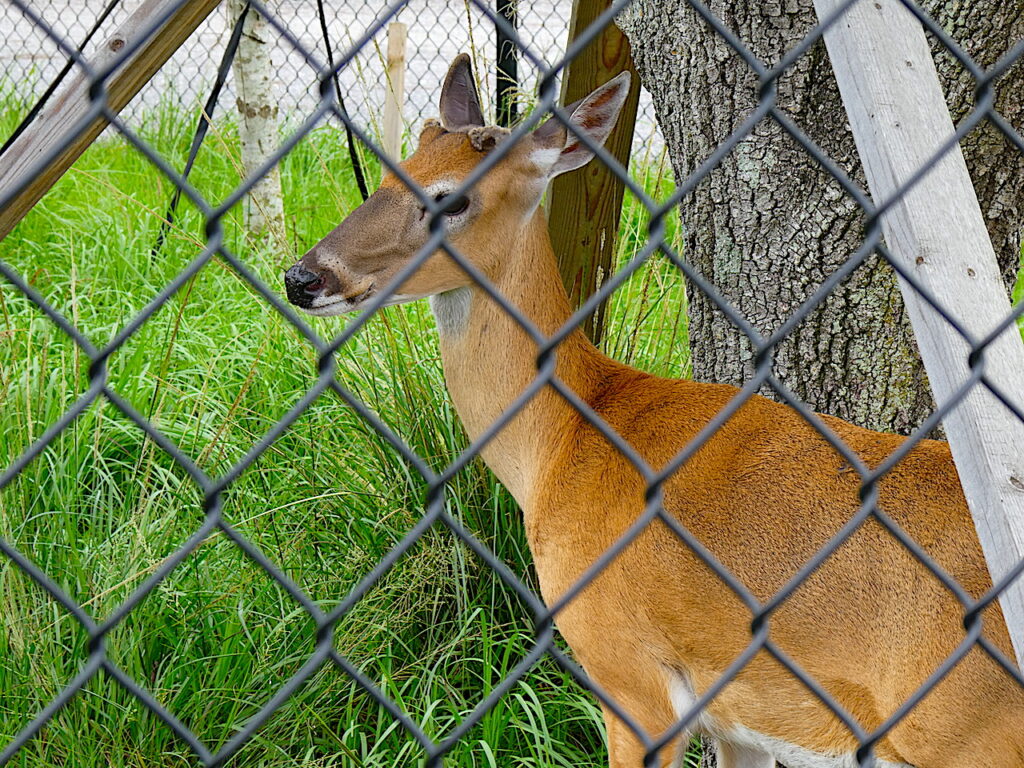
Red & Gray Foxes
The red fox looks like a small dog, weighs 10 to 15 pounds, and measures up to 2 feet long with another foot for a bushy tail. The end of the tail is black, tipped with white. Because the gray fox frequently has quite a lot of red hair, it may be confused with the red fox. Foxes are nocturnal animals but occasionally feed during the day and more at dawn and dusk.

Reptile Complex
After seeing the foxes, we headed to the Lloyd Schiiler Reptile complex. Although we were yet to arrive, we saw this fellow slithering down the fence. This Corn Snake was escaping or trying to break in next to the complex.

Alligators
After cooling off and seeing the reptiles, we examined the alligators. Not closely mind you, but from the dock. Alligators feed on small fish, frogs, chickens, and rats. They have sensory pits on their jaws that can detect subtle movements in the water, helping them to locate prey. The resident gator at Busch Wildlife keeps a wary eye on things in the area.
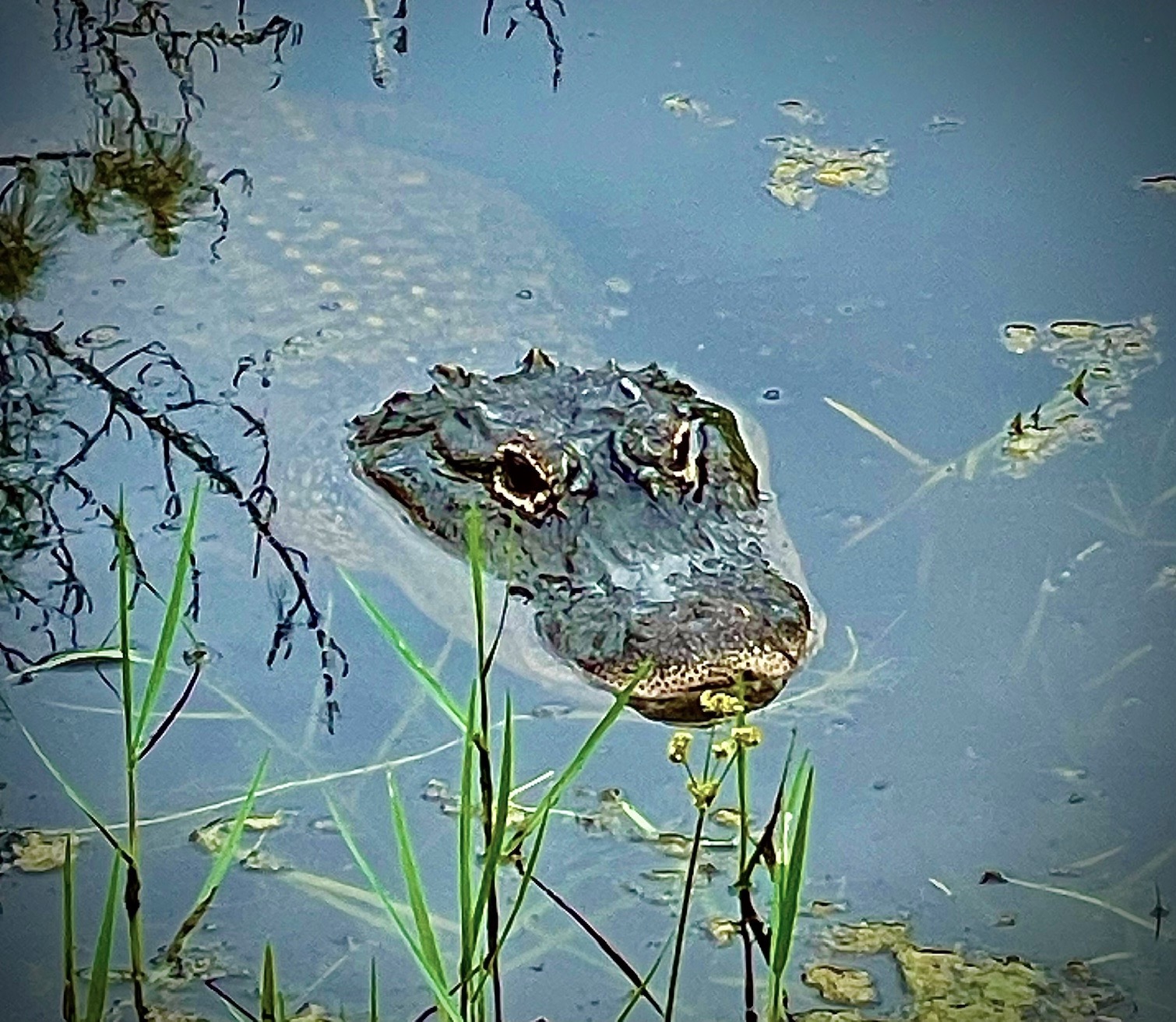
Conclusion
The Busch Wildlife Center does an excellent job caring for and promoting the care of Florida’s wild animals. They moved into their new facility here at Rocky Pines Road in the fall of 2023. The sanctuary offered a rare opportunity to learn about Florida’s wildlife and natural environments.
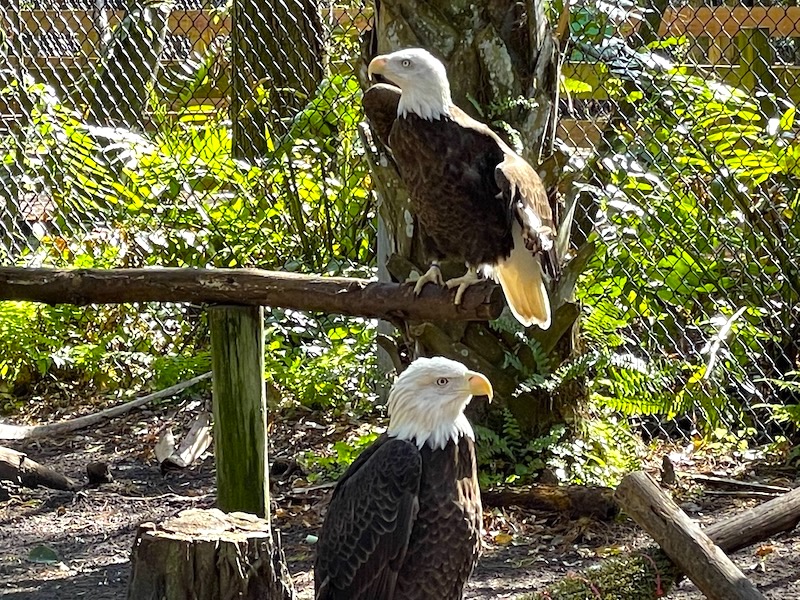
On the north side of the campus, the wildlife rehabilitation center is also open seven days a week, from 8 a.m. to 4:30 p.m., ready to receive and care for injured, sick, or orphaned animals.
Busch Wildlife Sanctuary is at 17855 Rocky Pines Road, Jupiter; admission is by donation. It’s open to visitors seven days a week, from 10 a.m. to 4:30 p.m.
What to do when you have found an injured animal:
- Call Busch Wildlife Sanctuary for assistance at 561-575-3399
- Use common sense and think of your safety first. Hurt animals can often try to defend themselves if confronted.
- Safely try to contain the animal
- Keep the animal warm & quiet and away from other animals.
- Do not pet or handle the animal
- Do not try to feed or give water to the animal
More Nearby Animal Facilities Worth Checking Out
Loggerhead Marine Life Center: Visit the Loggerhead Marine Life Center in Juno Beach. The center is a sea turtle research, rehabilitation, education, and conservation center.
Florida Oceanographic Coastal Research Center: The Florida Oceanographic Coastal Center is a non-profit 57-acre marine life nature center located on Hutchinson Island between the Indian River Lagoon and the Atlantic Ocean in Stuart, FL.
Lion Country Safari: Lion Country Safari in West Palm Beach is a drive-through safari where animals roam where they want and cross the road steps in front of your car.
The Palm Beach Zoo: As soon as we walked into the entrance of The Palm Beach Zoo in West Palm Beach, we felt as if we were walking into a lush tropical garden filled with beautiful pathways and exotic animals all around us. The Palm Beach Zoo is inviting because it is beautifully landscaped. Because of its size, it feels more like a stroll through a beautiful park.




